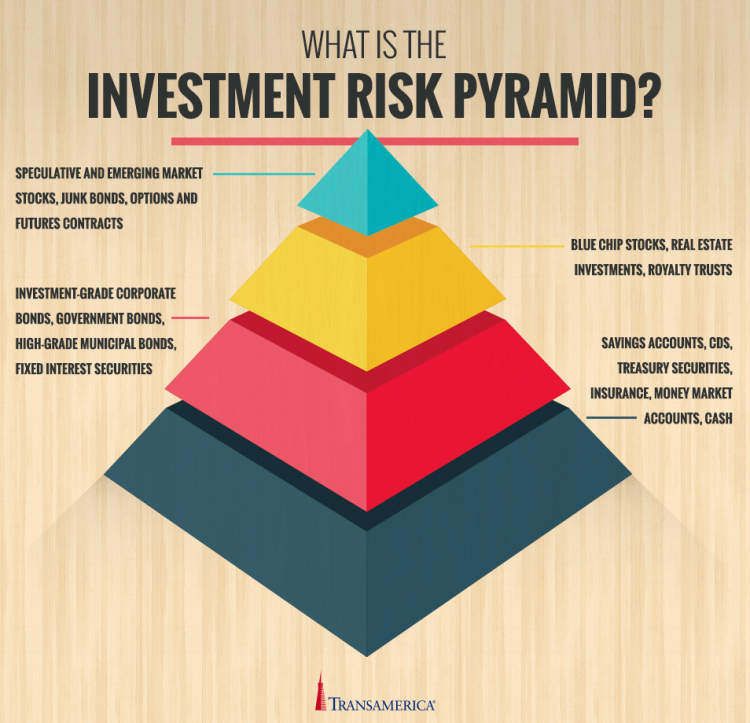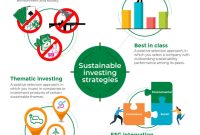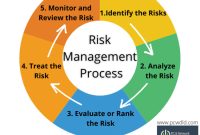The objective of investment for financial success is to maximize returns while managing the associated risks. Each individual has a different risk appetite and must consider it when exploring best investment strategies.
This article attempts to explore the diverse investment strategies available today and how they can be used to facilitate greater returns while mitigating different risk appetites. Through a comprehensive analysis of financial market data, we will discuss how risk management tools and portfolio diversification techniques can help to achieve your desired financial objectives.
Understanding Different Levels of Risk
When it comes to investing, everyone has different risk appetites. If you’re looking to explore different investment strategies, understanding different levels of risk is key. Risk can generally be divided into four categories, including speculative, moderate, conservative, and conservative.
Speculative Risk
Speculative risk, also known as high-risk, involves investing with the potential to reap high rewards but also comes with a significantly higher chance of loss. Investing in new businesses or startup companies, as an example, usually fall under this category. While the high return on investment opportunities can be appealing, it’s important to be informed about the risks involved.
Moderate Risk
Moderate risk typically provides a good balance between risk and reward. It involves investing in a combination of stocks, bonds, and mutual funds. You’re still taking some risks, but you’re more likely to receive long-term returns that are more consistent and reliable. This option can be attractive for those who want to make a good return without investing too heavily.
Conservative Risk
Conservative risk investing typically involves a conservative portfolio that is made up of low-risk investments. Here, you’re likely to get lower returns without the ups and downs of the stock market. This option may be attractive for those who are nearing retirement or seeking a steady, consistent return.
Fixed-Income Risk
Fixed-income risk involves investing in bonds and other fixed-income instruments such as annuities. These investments offer more security and the ability to better protect your principal, which may appeal to those looking for a long-term, low-risk investment. This strategy may be attractive to those with lower risk tolerance.
When exploring different investment strategies, understanding the different levels of risk is key. It’s important to assess your personal risk tolerance and goals in order to find the best approach for your situation.
Exploring Investment Strategies for Low-Risk Investors

Individuals who are seeking to protect their capital and reduce risk often focus on low-risk investing strategies. These strategies are designed to provide steady returns while minimizing the potential for large losses. Below are some of the most popular investments strategies for investors with low appetite for risk.
1. Dividend-Paying Stocks
Dividend-paying stocks are equities that provide a portion of their profits to shareholders on a regular basis. These stocks are typically large, established businesses and can provide a steady income stream. Many investors like to own a mix of dividend paying stocks and reinvest the dividends into new shares, a strategy known as “dividend reinvestment”.
2. Bonds
Bonds are a great way for investors to generate a steady stream of income. Most bonds are backed by the government or state and are an ideal avenue for low-risk investors. Investors can purchase bonds directly from the government or through a broker. The longer the term of the bond, the more risk investors take on but also the greater rewards they can potentially reap.
3. Mutual Funds
Mutual funds provide investors with a diverse portfolio of investments managed by a professional fund manager. This allows for diversification across different securities including stocks, bonds, and other investments. Mutual funds are generally considered to be a low-risk investment because of the diversification they offer.
4. Exchange Traded Funds (ETFs)
Exchange traded funds, or ETF’s for short, are similar to mutual funds but trade on an exchange. ETFs provide investors with a low-cost, diversified portfolio of investments without relying on a fund manager for success. ETFs also provide the opportunity to access different markets and asset classes, including emerging markets and commodities.
5. Money Market Funds
Money market funds are similar to mutual funds and ETFs in that they provide investors with a diversified portfolio of investments. However, they tend to be focused on low-risk investments and are designed to provide investors with steady returns with minimal risk.
For investors with low appetite for risk, exploring these diverse investment strategies can prove beneficial. Each option has its own set of advantages and disadvantages, and it is important that investors conduct due diligence and understand the associated risks before investing. With careful planning and research, investors can determine the best investment strategy to help reach their goals.
Balancing Risk and Return to Find Optimal Strategies for Medium- and High-Risk Appetites
Short-term and long-term investments are fraught with risks, making it difficult to find the right approach to capitalize on returns. To mitigate risk while maximizing potential returns, it’s essential to recognize the difference between medium- and high-risk investment strategies. By understanding and balancing one’s risk tolerance and return expectations, investors can make intelligent investment decisions that align with their goals and financial capabilities.
For investors with a medium-risk appetite, there are strategies to generate returns while avoiding unproductive losses. Generally, they will prefer a relatively balanced portfolio, with a mix of safe investments such as cash, treasury bills and money market funds, as well as stocks, bonds, and alternative investments. This type of investment strategy is often focused on maximizing short-term gains, diversification of investments, and minimizing risk.
Investors with a higher risk tolerance are more willing to accept a greater degree of volatility in return for higher returns. They should consider investing the majority of their funds in a portfolio that consists of stocks, mutual funds, ETFs, REITs, private equity, and venture capital investments. The goal of this strategy is to generate returns from capital growth, dividends and other speculative investments. This type of strategy requires proactive management of the portfolio and may take a long time to generate returns.
In conclusion, investors should evaluate their risk and return requirements when selecting an investment strategy. The right mix of investments for medium-risk and high-risk appetites depends largely on the investor’s individual financial capabilities, goals, and risk tolerance. Tactical allocation and active portfolio management are essential to mitigate risk and maximize returns for any investment strategy.
Conclusion
This article explored the various investment strategies applicable to different risk appetites. As a result of the increasing complexity of financial markets, achieving financial goals becomes increasingly difficult. By taking the time to understand different risk appetites and investing accordingly, investors can maximize their chances of success.
In conclusion, diversifying investments is key for any investor attempting to make a return. There are various strategies which can be employed, ranging from low, moderate to higher risk investments. By determining one’s risk appetite, sufficient research and understanding one’s financial objectives, investors can make better choices on how to manage their investments.




